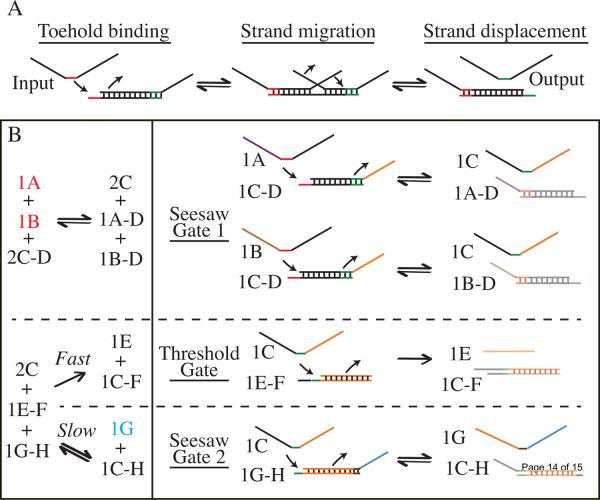Figure 2.
Toehold exchange and seesaw gate function and implementation [13]. (A) A ssDNA input binds to a complementary toehold (red) on a seesaw gate and – through strand migration – replaces an output strand of the dsDNA that is then capable of the reverse reaction via a separate toehold (green). (B) A functional AND gate that takes input molecules A and B and outputs G. The left side presents a simplified overview while the right includes molecular detail. At seesaw gate 1, inputs (A and B) displace a strand of DNA (C) that then encounters threshold gate 1(E–F). This gate quickly and irreversibly turns C into waste by having a larger complementary overhang than that of molecule G–H. Only after threshold molecules have been depleted will C bind to G–H and produce the output strand G.

